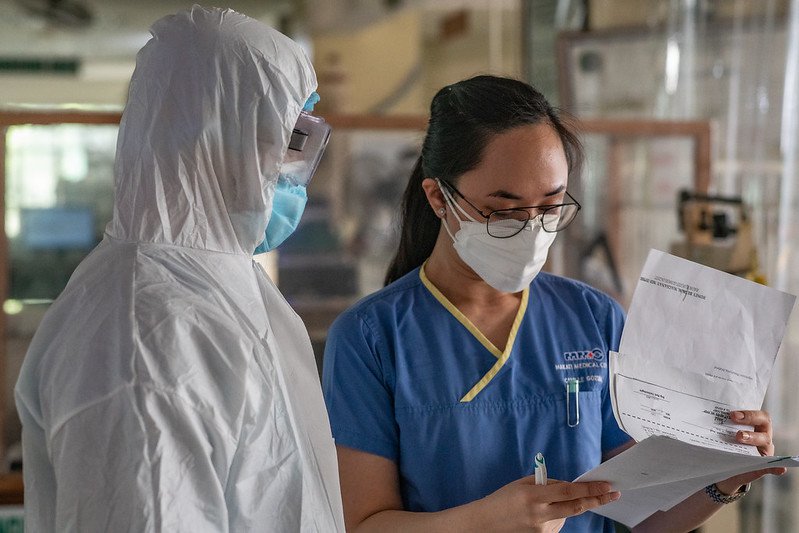In response to the Covid-19 crisis, it is reasonable to expect development finance institutions (DFIs) to reorient more of their investment toward healthcare. Our recent analysis found that only a small share of DFI investment has been made in the health sector. DFIs have responded quickly and flexibly to support existing healthcare investees via debt repayment moratoriums, working capital injections, and the provision of grants to procure personal protective equipment (PPE).
This focus on existing clients is exactly what we would expect in the early days of a crisis. But in our opinion, DFI investment should be pushed to do much more in healthcare, in recognition of the fact that the pandemic has reframed global health as an issue already spawning intriguing innovations.
There has been a growing recognition of healthcare as a basic human right and as a necessary precondition to social and economic development, and it is important to finance it as such. This acknowledgment poses great opportunities for DFIs to work in a complementary manner with private and public investors in innovative ways.
Here are three ways DFIs can enhance investments in healthcare.
1. Target investment toward low-income countries
Among the health investments that we were able to track in our previous research, low-income countries (LICs) accounted for less than 1% of DFI health commitments. DFIs need to identify clear outcomes for investments and match these outcomes with the most effective instruments they are willing to use. For the poorest countries, private financial investment will need to be subsidised by DFIs, donor agencies, and domestic governments.
For other countries, DFIs should pursue some commercial return on their investment, but it needs to be done with an eye on impact. DFI portfolios must remain balanced but given most DFI healthcare investments take the form of infrastructure loans to middle-income countries (MICs), it is evident that these investments are more tilted toward financial return than transformative impact.
In some cases, DFIs can look to their own investment portfolio to see if current investments in MICs can be adapted to LICs. DFI investments in the Aga Khan University of Karachi (AKUH) and Narayana Health in India are just two examples through which DFI investment has increased access to healthcare among people in poverty and has insured them against catastrophic healthcare costs. These are crucial interventions that should be adapted and replicated, especially as we know that a large percentage of health expenditures in LICs are out of pocket.
2. Partner with governments to think about broader systems
To enhance the impact of their health investments, DFIs must think about the broader health system. Money is fungible, and DFIs should work with investees to assess the balance investing in equipment and supplies and investing in capital infrastructure while considering the appropriate tenure of the total investment. These assessments should be based on areas where DFI investment can fill existing funding gaps and complement public sector healthcare.
Moreover, how DFI investment opportunities are assessed should be tailored to meet this thinking on complementarity. Traditional impact metrics of jobs created will not capture the impact of a healthcare provider having better equipment to serve its patients. DFIs must assess how their investments in healthcare contribute to the wellbeing of the employees and customers of private sector businesses in LICs and MICs. The Covid-19 crisis has reinforced the symbiotic relationship between global health and economic development; DFI investment allocations should also recognise this relationship.
3. Embrace innovative financing mechanisms
Finally, as MedAccess and other DFI investments have proven, the enormity of the global health challenge means that there is plenty of opportunity for DFIs to find their own niche in healthcare using innovative financing mechanisms. While debt will remain important, grants, guarantees, technical assistance, and equity all have a place in tackling healthcare challenges. Some challenges will require more concessional capital while some will require capital that is more patient. To be transformative in healthcare, DFIs need to break from their project finance mindset and investigate ways to complement private investment, donor capital, and domestic governments.
Our own research found that when DFIs invested via pooled investment vehicles, volume guarantees, first loss guarantees and Development Impact Bonds (DIBs), this investment acted as a catalyst for market development; especially in health supply chains. Our research also found that the popularity of these types of investments among DFIs was limited. To seize on the opportunity to make a meaningful contribution to the Covid-19 crisis recovery, DFIs must broaden their investment space in healthcare across markets and across instruments.
This blog is based on a webinar on investing in healthcare to save lives . It was the second of three webinars hosted by ODI looking at how DFIs and their investees are adapting their operations in the face of the Covid-19 crisis. The first webinar focused on how DFIs are supporting job protection during and after the pandemic and the last webinar will examine how DFIs can tackle liquidity issues faced by investees.
This project is supported by the members of European Development Finance Institution and led by CDC Group, DEG, and Proparco.


